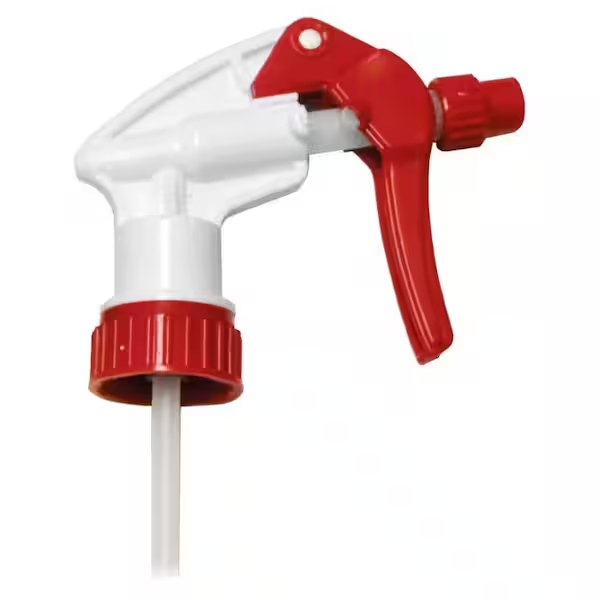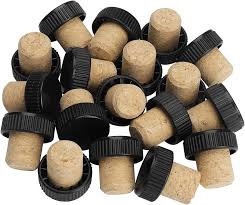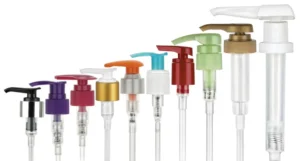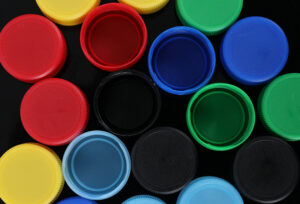In industrial settings—whether it’s a busy factory floor, a sprawling agricultural operation, or a high-traffic cleaning crew—plastic trigger spray pumps are workhorses. They dispense everything from harsh chemicals to lubricants, and when they fail, the costs add up: replacement expenses, downtime, and even compromised safety. But here’s the thing: most pump failures aren’t inevitable. With the right care, selection, and maintenance, these workhorses can last far longer than their typical lifespan. At STDPAK, a leading supplier of industrial packaging solutions, we’ve seen firsthand how simple strategies can double or even triple a pump’s service life. Let’s dive into the practical steps that make all the difference.

Understanding the Composition and Vulnerabilities of Plastic Trigger Spray Pumps
To extend a pump’s life, you first need to know what makes it tick—and what breaks it down. Industrial plastic trigger spray pumps are built from a mix of materials, each with its own strengths and weaknesses:
- PP/HDPE plastic bodies: Durable but prone to cracking under extreme pressure or chemical exposure.
- EPDM rubber gaskets: Create a tight seal but degrade over time when in contact with solvents or high temperatures.
- Stainless steel springs: Resist rust but can weaken with repeated overuse.
- Nozzles: Clog easily if exposed to debris or thick liquids, reducing spray efficiency.
In industrial environments, these components face unique stressors: daily contact with corrosive cleaners, pesticides, or oils; constant use (sometimes hundreds of presses per shift); and exposure to extreme temperatures—from sweltering warehouses to freezing outdoor storage. The result? Premature wear signs like leaks, a stiff trigger, or a sputtering spray. Recognizing these early warning signs is key to addressing issues before they force a full replacement.
Selecting the Right Pump for Industrial Environments
The longest-lasting pumps are often the ones that were chosen with the job in mind. Here’s how to pick wisely:
Chemical Compatibility
Not all plastics and rubbers stand up to the same substances. For example, a pump with standard EPDM gaskets might fail quickly when used with strong solvents, but one with Viton gaskets (available through STDPAK’s industrial line) will hold up. Always check the pump’s chemical resistance chart—STDPAK provides detailed compatibility guides for every model—to ensure it matches the liquids you’re dispensing, whether it’s acidic cleaners, oil-based lubricants, or agricultural pesticides.
Pressure and Volume Ratings
Industrial use demands pumps built for endurance. Look for models rated for 10,000+ cycles (STDPAK’s heavy-duty series exceeds 15,000 cycles) and designed to handle high-volume dispensing without overheating. Avoid using light-duty consumer pumps in industrial settings—they’ll wear out in weeks, not months.
Ergonomic Design
A pump that’s uncomfortable to use leads to bad habits: users pressing too hard, angling the pump awkwardly, or dropping it. STDPAK’s ergonomic triggers are designed to reduce hand fatigue, encouraging proper handling and reducing unnecessary strain on internal components.
Pre-Use Preparation to Prevent Early Damage
Even the best pump will fail early if not prepped properly:
Inspection Protocols
Before the first use, give the pump a thorough once-over. Check for cracks in the plastic body, loose nozzles, or damaged gaskets—common issues in shipping. STDPAK’s industrial pumps come with a 3-point quality check, but it’s still smart to verify. A small crack today can turn into a major leak tomorrow.
Priming Techniques
Air locks are a silent killer of pump lifespan. To prime correctly: fill the bottle, attach the pump, and pump slowly 5-10 times until the liquid flows steadily. Never force the trigger if nothing comes out—this strains the spring. STDPAK’s pumps feature a self-priming design to reduce this risk, but proper priming still helps.
Calibration
Matching the nozzle setting to the task reduces wear. For example, using a “mist” setting for wide-area cleaning and switching to “stream” for targeted application. Avoid running the pump on the highest pressure setting unless necessary—this overworks the spring and valve.
Daily Maintenance Practices
Consistent daily care is the backbone of longevity:
Cleaning Procedures
Residue from chemicals like bleach or pesticides can eat away at gaskets and nozzles. After each use, flush the pump with clean water (or a neutralizing agent for strong acids/bases). For stubborn buildup, STDPAK recommends a 5-minute soak in a 50/50 vinegar-water solution—safe for plastic and rubber components.
Lubrication
A dry trigger mechanism leads to stiffness and eventual failure. Every 2-3 weeks, apply a food-grade silicone lubricant (avoid petroleum-based products, which degrade rubber) to the trigger hinge and spring. STDPAK’s pumps have a sealed lubrication chamber to reduce frequency, but regular checks still help.
Storage Guidelines
When not in use, store pumps in a dry, temperature-controlled area. Avoid leaving them in direct sunlight (which warps plastic) or freezing conditions (which cracks rubber gaskets). For long breaks, detach the pump, clean it, and store separately from the bottle.
Handling and Usage Best Practices
How your team uses the pump matters as much as maintenance:
- Proper Grip and Trigger Operation: Teach users to press the trigger with steady, moderate force—no slamming. Over-pressing bends the spring and damages the valve.
- Avoiding Contamination: Keep nozzles capped when not in use, and never set the pump down on dirty surfaces. A small speck of debris can clog the nozzle, forcing extra pressure to clear it.
- Limiting Extreme Exposure: Don’t leave pumps in hot vehicles or outside in freezing weather. STDPAK’s industrial pumps are tested to withstand -10°C to 60°C, but prolonged exposure to extremes shortens life.
Troubleshooting Common Issues
Addressing problems early saves the pump:
- Clog Removal: For nozzle clogs, use a thin wire (not a pin, which can widen the opening) to clear the hole. Soaking in warm water also works. Never poke the nozzle with sharp objects—this ruins spray consistency.
- Leak Repair: Most leaks come from worn gaskets, not the pump body. STDPAK offers replacement gaskets for all models—swap them out instead of buying a new pump.
- Pressure Restoration: If the spray weakens, check the valve (inside the pump base) for debris. Clean it with a soft brush and reassemble—this often fixes the issue.
Long-Term Care and Replacement Scheduling
Even with perfect care, pumps eventually wear out. Here’s how to manage your fleet:
- Regular Inspections: In high-use areas, check pumps weekly for cracks, leaks, or stiffness. In lower-use areas, monthly checks suffice.
- Batch Testing: Rotate pumps between critical and non-critical tasks. A pump used daily in a factory can be moved to a weekly inventory check role, extending its overall life.
- Knowing When to Replace: If the body is cracked, the trigger is bent, or the valve can’t be repaired, it’s time to replace. STDPAK offers bulk discounts on replacements, making it cost-effective to retire worn-out pumps.
Case Studies: Real-World Results
- A manufacturing plant reduced pump replacements by 40% after switching to STDPAK’s chemical-resistant pumps and implementing daily flushing protocols.
- An agricultural company extended pump life from 3 months to 9 months by training crews on proper priming and storage.
- A cleaning service cut costs by 25% by using STDPAK’s ergonomic pumps (reducing user damage) and replacing gaskets instead of entire units.
FAQ: Maximizing Plastic Trigger Spray Pump Lifespan
- Q: Can I use the same pump for different chemicals?
A: It’s risky. Residue from one chemical can react with another. If necessary, 彻底清洗 (thoroughly clean) the pump between uses. Better to assign dedicated pumps for specific chemicals.
- Q: How often should I lubricate the trigger mechanism?
A: Every 2-3 weeks for daily use. For heavy-use environments (500+ presses/day), weekly lubrication is better.
- Q: What’s the best way to store pumps during off-seasons?
A: Clean thoroughly, disassemble if possible, and store in a dry, cool place. STDPAK’s storage cases protect pumps from dust and damage.
- Q: Are there industrial-grade coatings to protect pumps from corrosion?
A: Yes—STDPAK offers a UV-resistant, chemical-proof coating for pumps used in extreme environments (MOQ applies).
- Q: How do temperature fluctuations affect pump integrity?
A: Plastic expands and contracts, weakening seams. Rubber gaskets harden in cold or soften in heat, leading to leaks. Avoid rapid temperature changes.
Extending the lifespan of plastic trigger spray pumps in industrial settings isn’t about overcomplicating things—it’s about smart selection, consistent care, and knowing how to troubleshoot. By choosing the right pump for the job (STDPAK’s industrial line is built for this), training teams on proper use, and sticking to a simple maintenance routine, you’ll cut costs, reduce waste, and keep operations running smoothly. Ready to see the difference? Reach out to STDPAK today to find the perfect pump for your needs—and start getting more life out of every unit.





